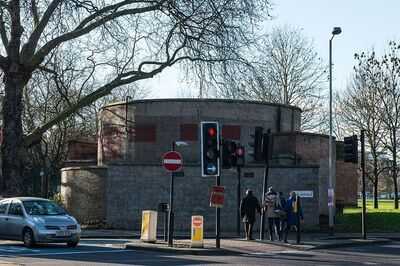There's no doubt that London is one of the most interesting and historic places in the world, but it can be difficult to keep up with it all. But one historian has shared the interesting history as to why some oddly-shaped buildings were first created.
Jack Chesher has made a name for himself on social media, where he's known as 'livinglondonhistory'. He often makes videos and content about the long and interesting history of London and beyond. In one video, he brought attention to some odd-looking buildings you most likely have walked past if you've ever been to London, as they've got a interesting history as to why they were made.
"Running in a line, through the middle of London, is a series of these odd, round structures that you may well have walked past before," Jack explained at the start of the Instagramvideo.
- Doing a good deed could slash your inheritance tax bill - here's how
- Nail tech 'speechless' after woman's bizarre reaction when asked for payment
He went on to explain that the one he filmed at the start of the video was located by Goodge Street station on Tottenham Court Road, while there are several others
They span London from North to South, are nearly always circular, with vents on top and always come in pairs," they explained in the caption of the video. "They are, in fact, fascinating remnants from a World War Two plan to protect London’s populace."
What are the round buildings in London?Jack went on to explain that whenthe Blitz started in 1940, people found anywhere they could in order to take shelter from the bombs, such as church crypts, basements, or within the tube system.
To help protect Londoners, the government eventually commissioned several new deep-level shelters for people to seek shelter in.
These were made specifically by tube stations on the Northern Line. A lot of the deep-level digging had been done for a new express-line train before the war began.
In total, eight new deep level shelters were made, which were all 30 metres deep and able to hold 8,000 people each.
"Each one was protected by a circular, concrete structure. They held rows of bunk beds, a canteen, medical facilities, and more," they explained.
"By the time the shelters were finished, however, in 1942, the Blitz had ended, but some were opened up from 1944 to -45, during the V1 and V2 rocket attacks for people to use."
Now, over eighty years later, she shelters are still there, hiding underneath the modern city and are used for various things, such as archives, and storage, while the shelter in Clapham Common is used as an underground farm.
If you want to see what a shelter look like, you can also go on a tour of the Clapham South bunker with the London Transport Museum as part of one of their Hidden London tours.
You may also like

Annamalai accuses Stalin of hypocrisy over Tamil Nadu voter roll revision row

Justin Bieber says, even thinking about another woman is cheating

Cloud Seeding in Delhi: Cloud seeding trials are underway in several areas of Delhi, with artificial rain expected soon.

Tejasvi Surya meets DK Shivakumar, urges Karnataka govt to drop tunnel road plan and prioritise public transport for Bengaluru

Actors Rajinikanth, Dhanush receive bomb threats; probe launched







